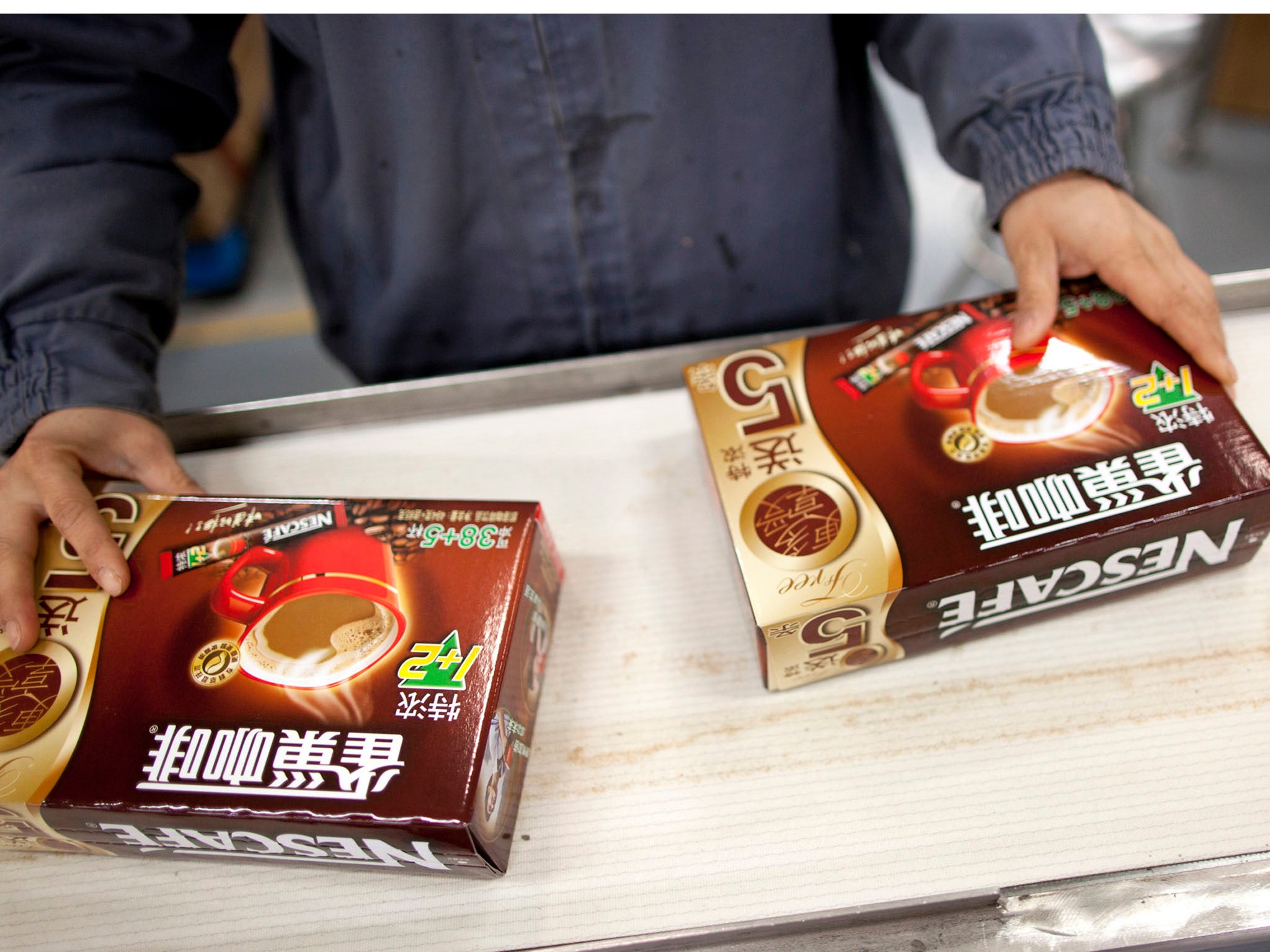Nestle moves to Congee from KitKat for Chinese palates

In 1874, just eight years after its founding, Nestle started selling condensed milk in China. It has since introduced Western products such as Nescafe, ice cream and KitKat bars. While those haven't sold badly, the Swiss company is now asking the Chinese what they really want.
Nestle has formed alliances with three Chinese food and beverage producers in the past three years and has set up research centers to improve local comestibles such as peanut milk, spicy Sichuan sauces, and congee, a rice porridge typically eaten for breakfast.
Rivals often modify existing products for China, such as PepsiCo's potato chips with Asian flavorings and Kraft Foods's green tea Oreos. Nestle goes further by creating new offerings to win over consumers deep into the hinterland.
"Nestle takes the view that all food tastes are local," said Jon Cox, head of Swiss research at Kepler Capital Markets. "You can't necessarily tweak a product and assume it'll have the same success in other countries."
With plans to double its research capacity in China, Nestle will soon have the biggest R&D infrastructure of any food company in the country, according to Cox. China is poised to become the Swiss company's No. 2 market, after the United States. Nestle expects revenue from China to exceed 5 billion Swiss francs ($5.3 billion) this year as rising living standards boost consumption.
Since 2010, Nestle has formed a bottled water venture with Yunnan Dashan Drinks and bought controlling stakes in candy maker Hsu Fu Chi International and Yinlu Foods Group, producer of congee and a peanut-milk beverage. Through the alliances, Nestle has tripled its China headcount to 47,000 employees. With 31 factories across the country, 90 percent of the products it sells in China are made there.
Nestle plans to build R&D centers at facilities owned by Hsu Fu Chi and Yinlu, where researchers will focus on ready-to- drink beverages and baked goods. The Swiss company already has a research center with Totole, a Chinese bouillon maker in Shanghai in which Nestle has an 80 percent stake. Another facility in Beijing focuses on nutrition and food technology.
The labs are "closer to the consumer, closer to the raw materials and closer to the marketing and are therefore better able to respond to consumer needs much faster," said Rebecca Lian, Nestle's head of R&D in China.
Nestle realized several years ago there was untapped potential in China's coffee market because most Chinese find Western coffee too bitter. The company spent more than a year working with consumer panels in Beijing to find an appealing brew. Panels of retirees and housewives met up to three times a day in a testing room. Food scientists across the corridor used their input to develop Smoovlatte, a cold milk-based coffee that's less bitter.
"Nobody in Switzerland, and probably not even a foreigner based in China, will understand that," said Nestle China head Roland Decorvet. "In China, you need Chinese people to develop products for the local market."
That's important for Nestle because its primary rivals in the country are domestic companies with a deep understanding of local tastes. Nine of the top 10 packaged food producers are Chinese, led by China Mengniu Dairy Co., according to Euromonitor International.
"The local players are getting stronger and have better access to the market," said Sanjay Dhiri, a partner at Bain & Co. in London. "They're extremely strong in the traditional trade such as local stores," whereas foreigners have focused on supermarkets and other more modern outlets.
Nestle, tied with Bright Food Group Co. as the ninth- biggest packaged food company in China, has market share of 1.7 percent, up from 1 percent in 2010, the second-fastest rate of expansion in the industry, according to Euromonitor. Mars Inc., at No. 11 the next-biggest foreign player, has seen its share stagnate over the same period.
Yinlu had 750 million francs in 2010 revenue and has seen sales grow tenfold over the past decade. The company's offerings appeal to lower-income consumers in China where the population has shifted to urban areas from the countryside as workers chase economic growth.
"A lot of people just don't have the time these days to prepare food themselves," said Yu Meiling, who runs a small grocery on the outskirts of the central Chinese city of Wuhan crowded with multicolored boxes of liquor, snacks, and sodas. Among them are cans of Yinlu's congee with a plastic spoon inside the lid so workers, students and others on the go can eat it without access to a kitchen.
PepsiCo's approach differs from Nestle's in that it has largely adapted existing products to Chinese tastes. The company, which this month opened a research center in Shanghai, its largest such facility outside North America, seeks to fuse flavors from various cultures, said Shank Hu, PepsiCo's China R&D chief.
Among the offerings: Quaker oatmeal with red dates, wolfberry and edible white fungus as well as Lay's potato chips with fish-head soup flavoring. There's even one variety of crisps based on a recipe for chicken cooked in Pepsi.
"We told the chef, 'Hey, give us some fusion ideas. How do you get the best of the east and the west mixed together?'' Hu said. ''It has a very traditional taste, similar to Chinese- style stewed pork.''
— With assistance from Liza Lin in Shanghai.
Join our commenting forum
Join thought-provoking conversations, follow other Independent readers and see their replies
Comments
Bookmark popover
Removed from bookmarks